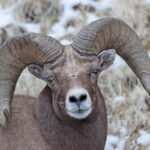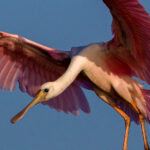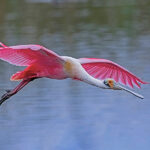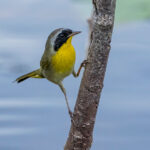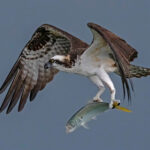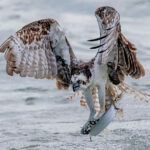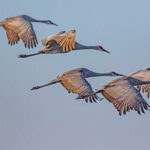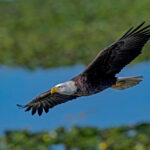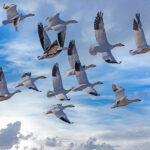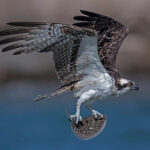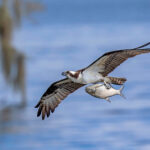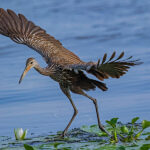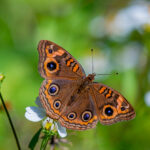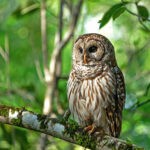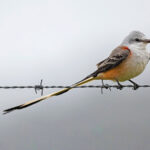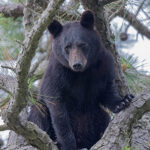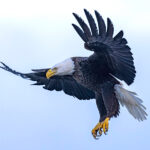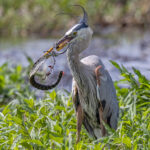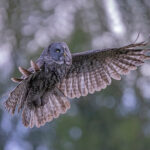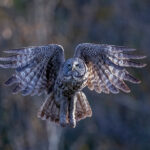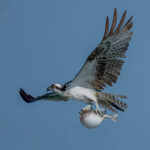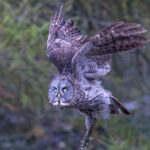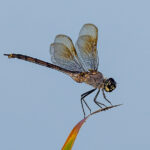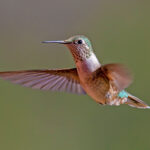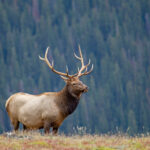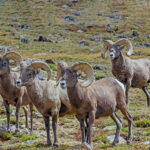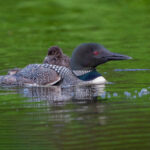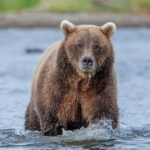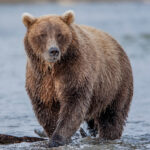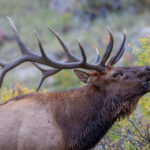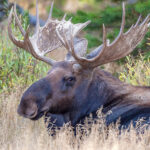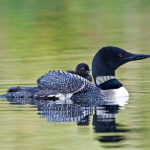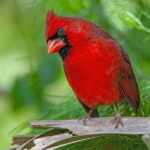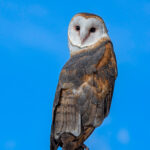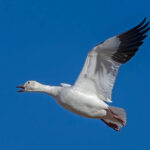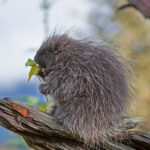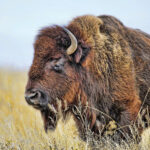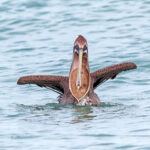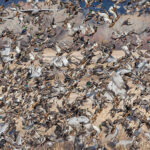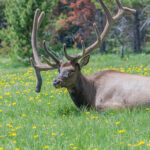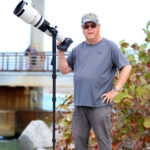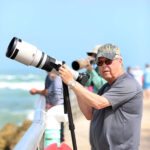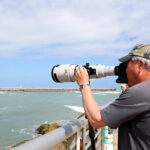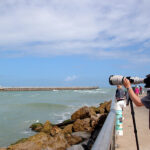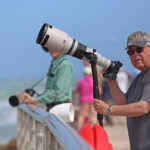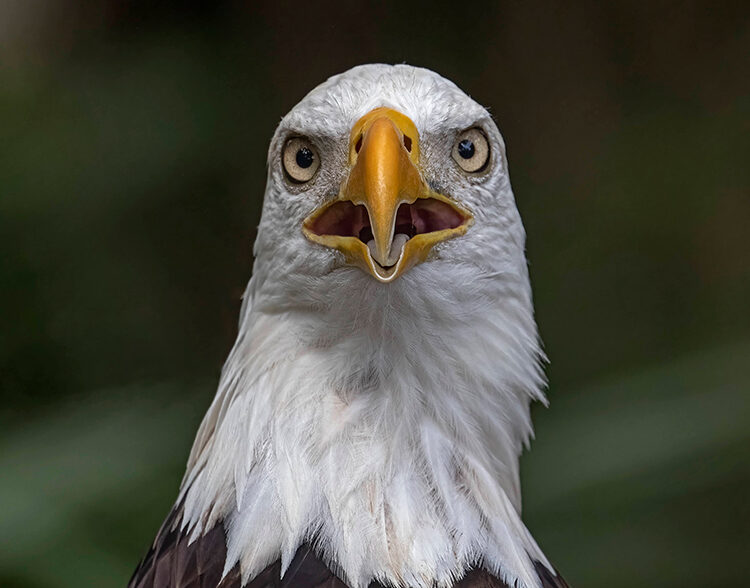
“I’m an outdoors person. I appreciate nature,” says nature photographer Dale Erickson, who is the featured artist at the Main Street Vero Beach Gallery through Feb. 28.
Growing up in Duluth, Minn., Erickson remembers spending much of his youth hunting, fishing and camping, before later in life discovering the joys of shooting with a camera. The solitude and quiet of the great outdoors afforded him a respite from his work at a power plant, where he monitored the control room’s power system.
“I worked 12-hour shifts inside, by myself. It was stressful with phones ringing and bells and alarms going off. I tried to enjoy every minute outside that I could,” says Erickson, who first picked up a camera 35 years ago and now takes it wherever he goes to capture the majesty of nature on film.
“Photography gets me outside. I like to be with nature. I enjoy animals and birds and wildlife and solitude.”
A self-taught photographer, Erickson learned by reading books and experimenting with various techniques, but regrets not taking a class to learn photography basics, saying “it would have been much easier if I had.”
After shooting for many years in large format, he has since embraced digital technology.
“It is much better, because you can see what you’re getting right away. Previously, you had to spend money to get the film back. A lot of times, you messed up the whole roll and didn’t know it,” he says, ruefully shaking his head over missed shots. Even so, he adds, “for every photograph I keep, I’ve probably tossed 100.”
No matter the equipment, Erickson says, the main attributes needed are a keen eye and patience. He spends most days from sunrise to noon waiting for the right shots, watching from a distance, and using a long lens so as not to disturb the wildlife as they go about their daily routines.
“Once you’re out in nature, you start to anticipate what the animal or bird is going to do. You learn their habits and their movements. You have to study the light. Where is the light coming from, and what is the wind direction? Birds fly into the wind, so if you want to get the flying shot, you have to anticipate which way the bird is going to fly,” he explains.
“I go out for four or five hours, and I get maybe 10 seconds of shots. But those shots could be killers. I strive to get detail in the subject. I try to be as technical as I can to get it as sharp as I can. I try to anticipate what they’re going to do and then capture the moment when they’re taking off or where they’re going to land,” says Erickson.
“I want to get their wings in the right position along with the light. I just try for that perfect shot every day. I enjoy being there at that moment and appreciating that moment in time. It’s more about being out there than the photograph.”
He always plans ahead when traveling, researching the areas to ensure that he doesn’t miss any opportunities.
“I’ve been around,” says Erickson. In addition to Florida, he has traveled to Alaska, Colorado, Wyoming, Montana, New Mexico, Arizona and North Carolina, as well as various European sites.
Erickson’s work has been shown in numerous galleries and in various publications, and his photographs were selected on two occasions for Audubon Photography Awards: Top 100.
His 2016 entry, “Liftoff,” captured a frenzied flight of sandhill cranes, pintail ducks and mallard ducks in the Bosque del Apache National Wildlife Refuge in New Mexico. While watching the birds feed on corn, chufa and millet during a stop along their annual migration route, Erickson spotted a bald eagle, seconds before the foraging flock of birds sensed danger. Anticipating what was to come, Erickson was able to capture the birds as they scattered about.
For the 2020 competition, Erickson submitted “Great Capture,” a photograph he had taken at the Sebastian Inlet State Park of a brown pelican with a flounder fitted perfectly in its gular pouch.
In addition to the Sebastian Inlet, Erickson spends his time locally along Jungle Trail, in nature preserves and at sites along the Great Florida Birding Trail.
The West Regional Wastewater Treatment Facility Wetlands, where more than 170 species of birds were once known to visit, is one of his favorite locations. It was there that he was able to get shots of the snail kite, an endangered species.
At the time, the wastewater treatment plant was better maintained, and he recalls seeing about 30 small snail kites. Unfortunately, he says, “the area is overgrown now, and the birds are gone.”
Among his other subjects have been bears, deer, bighorn sheep, dragonflies, osprey, Egyptian geese, butterflies, caracaras, ducks, gannets, owls, cardinals, painted buntings, roseate spoonbills, snail kites, egrets, eagles, alligators, scrub jays, turtles and turkeys.
What his avian subjects generally have in common is that timely moment, just before a bird lands, just after it has taken flight, or as it swoops down to snatch a fish from the water and then flies off to enjoy the spoils.
“I prefer to capture motion. It’s technically a lot harder than taking a picture of a bird sitting in a tree,” he says.
Looking back, Erickson says eagles have been among his favorite subjects.
“They’re so impressive; their features and big talons. They’re just so majestic,” says Erickson, who is currently chronicling a pair of eaglets as they grow up in a nesting family off U.S. 1.
Despite his many adventures into the backwoods and rough terrain of America’s national parks, Erickson says his only close call came while shooting with a guide in Katmai National Park in Alaska. A large brown bear lumbered past them just a few feet away, but was fortunately more interested in scooping up the fish that were jumping in the river.
The one avian that has eluded him to date is the snowy owl.
“It’s on my bucket list of animals that I want to shoot. I plan to get back to Canada once the pandemic is over,” he affirms.
In addition to the Main Street Vero Beach Gallery, Erickson’s work can be viewed at dale-erickson.pixels.com.
Photos provided

